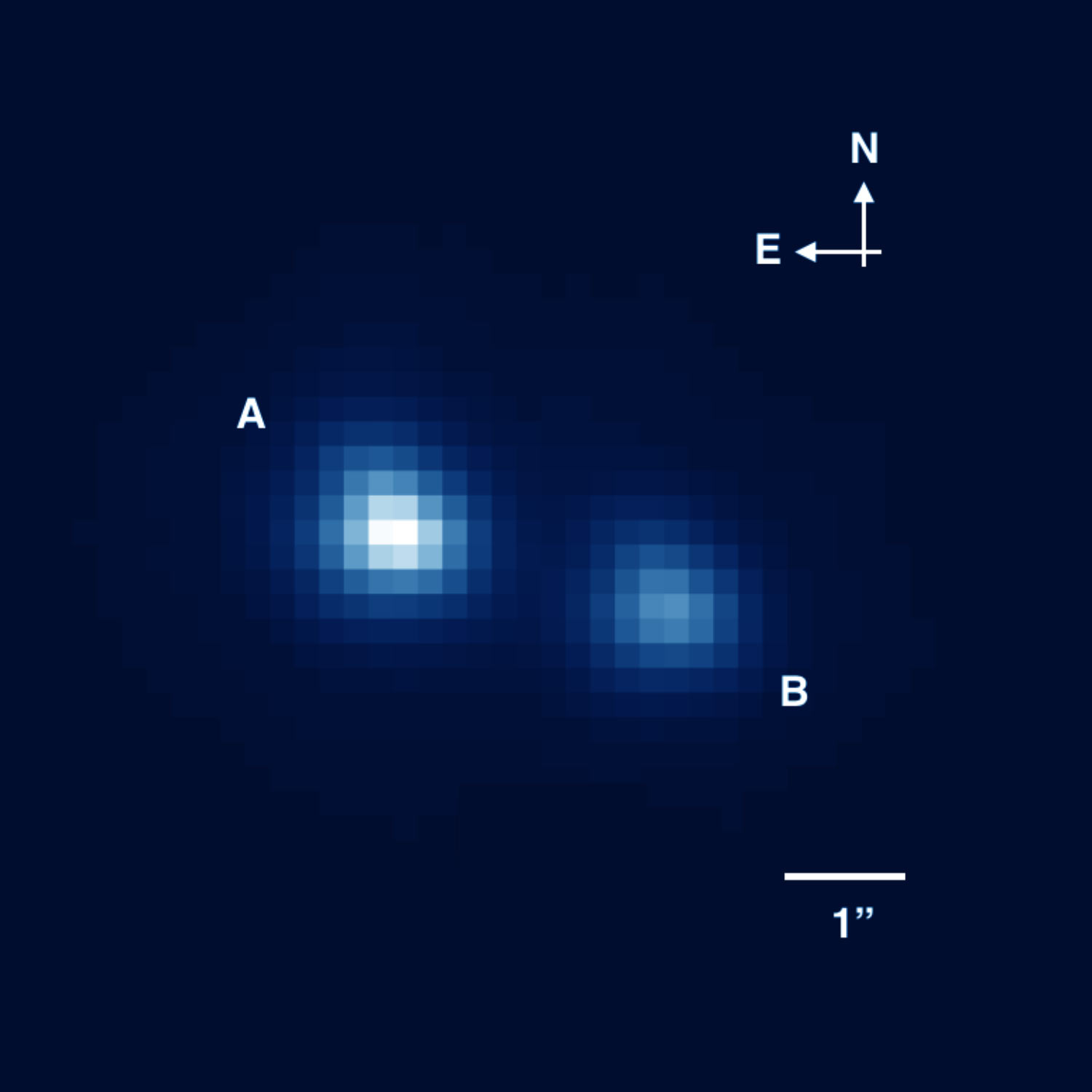Astronomers discovered the smallest star ever observed

Source: A Boetticher et al., 2017
Scientists from the University of Cambridge managed to find a star, the size of which only slightly exceeds the size of Saturn. At the moment, the open star is the smallest of all known to man. According to experts, its size and weight only slightly exceed the limit, after which a stable thermonuclear reaction begins. The object received the catalog name EBLM J0555-57Ab. This remote star is remarkable not only because its size is minimal, but also because its density is very high — higher than that of most stars (besides neutron stars, of course).
The force of attraction here is 300 times higher than on Earth. It is precisely because of its density that this object became a star, since the mass was sufficient to start the process of fusion of hydrogen nuclei. “Our discovery shows how small stars can be,” said Alexander von Bottcher, head of research. "If its mass was less, then the thermonuclear reaction would be unstable and the star would turn into a brown dwarf."
Brown dwarfs are interesting objects. They may be hot and large, but their mass is relatively small, so that the thermonuclear process is unstable. They are even called "failed stars". Unlike the main sequence stars, the contribution to the heat emission of such stars of the nuclear reaction of hydrogen nuclei (protons) fusion is insignificant, and, after exhaustion of the stocks of light nuclei, the thermonuclear reactions in their depths cease, after which they cool relatively quickly, turning into planet-like objects, that is, such stars are never on the main sequence of Hertzsprung - Russell. In such stars there are not even globular layers of radiant energy transfer. So the heat transfer is here only due to turbulent convection. Accordingly, brown dwarfs are uniform in depth in terms of chemical composition.
Earlier, the title of the smallest star known to man received an object with catalog number OGLE-TR-122b. This is a red dwarf that is only 20% more than Jupiter. The star was able to open thanks to a project to study dark matter. Scientists decided to look for it with the help of a gravitational effect that an invisible object exerts on light coming to Earth from stars or galaxies. Dark matter continues to be sought, but thanks to this project, brown or bright dwarfs, which are invisible from Earth due to their small mass of very low luminosity, have already been found. OGLE-TR-122b was opened back in 2005.

Scientists believe that in theory a star can exist if its mass is only 0.07-0.08 mass of the Sun. The newly discovered object has a mass of 0.081 solar, this is only slightly more than the predicted limit. The star EBLM J0555-57Ab is located 600 light years from Earth. It is located in the double star system. The “partner” of the object is much larger than it. A small star was fixed at the moment of passing through the disk of the second star. This is a well-known technique that is commonly used to search for exoplanets. Well, here, using the same method, we managed to find a small star. Specialists in the course of their work involved the resources of the WASP project, which is being implemented by several universities.
The EBLM star J0555-57Ab is smaller and probably colder than most giant gas exoplanets that astronomers have discovered. Project participants say that earlier this object could not be found, since the star is very small. But now, thanks to new equipment and various methods, scientists manage to do what previously seemed only science fiction.
By the way, EBLM J0555-57Ab is approximately equal in mass to the star TRAPPIST-1 , around which there are seven earth-like planets. But the radius of a newly discovered star is 30 times smaller than that of TRAPPIST-1. As far as can be judged, small stars are not at all rare, they are common in the Universe. But their size makes finding stars difficult. They are not very bright, small, cold. That is why scientists discover such objects quite rarely.
All Articles